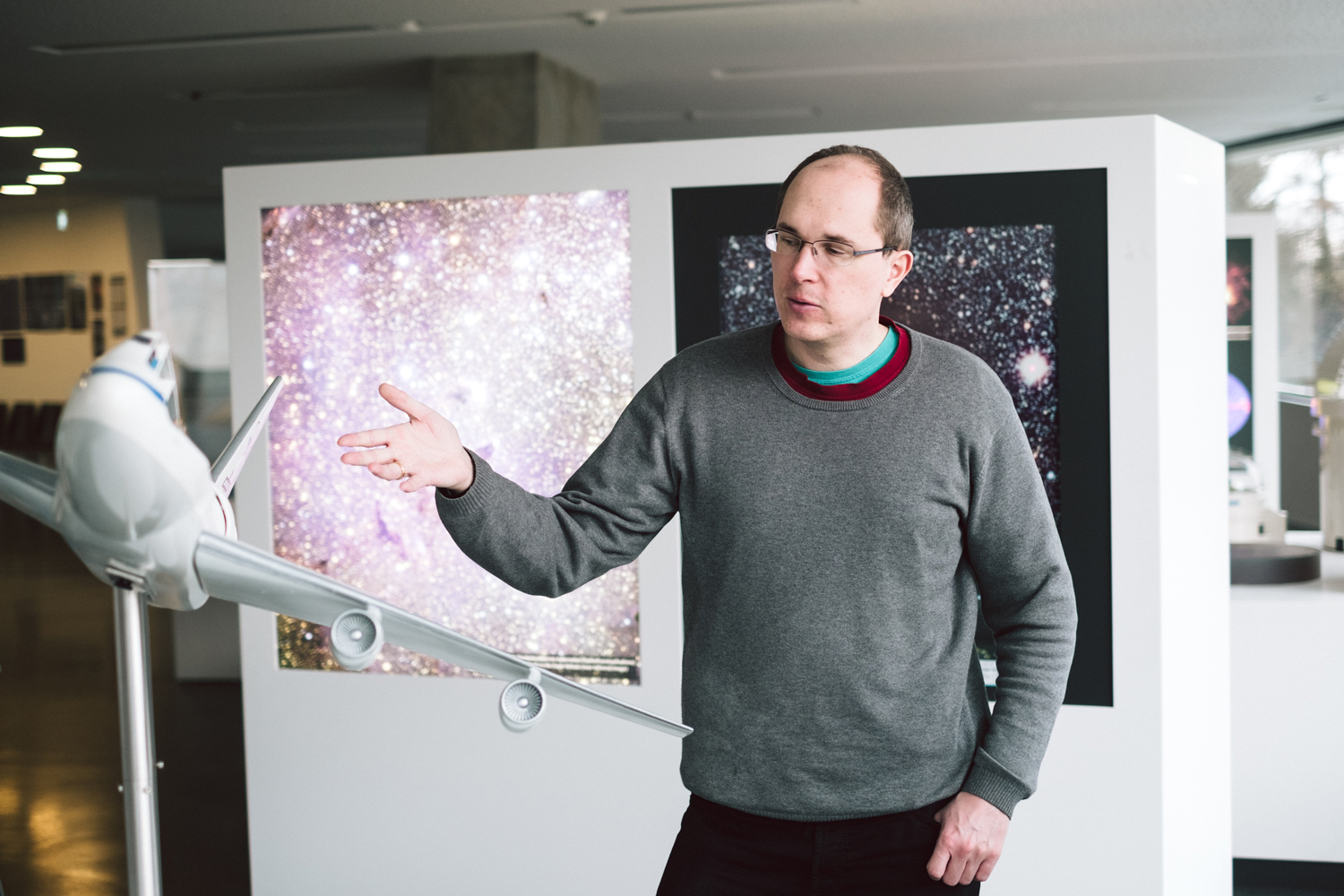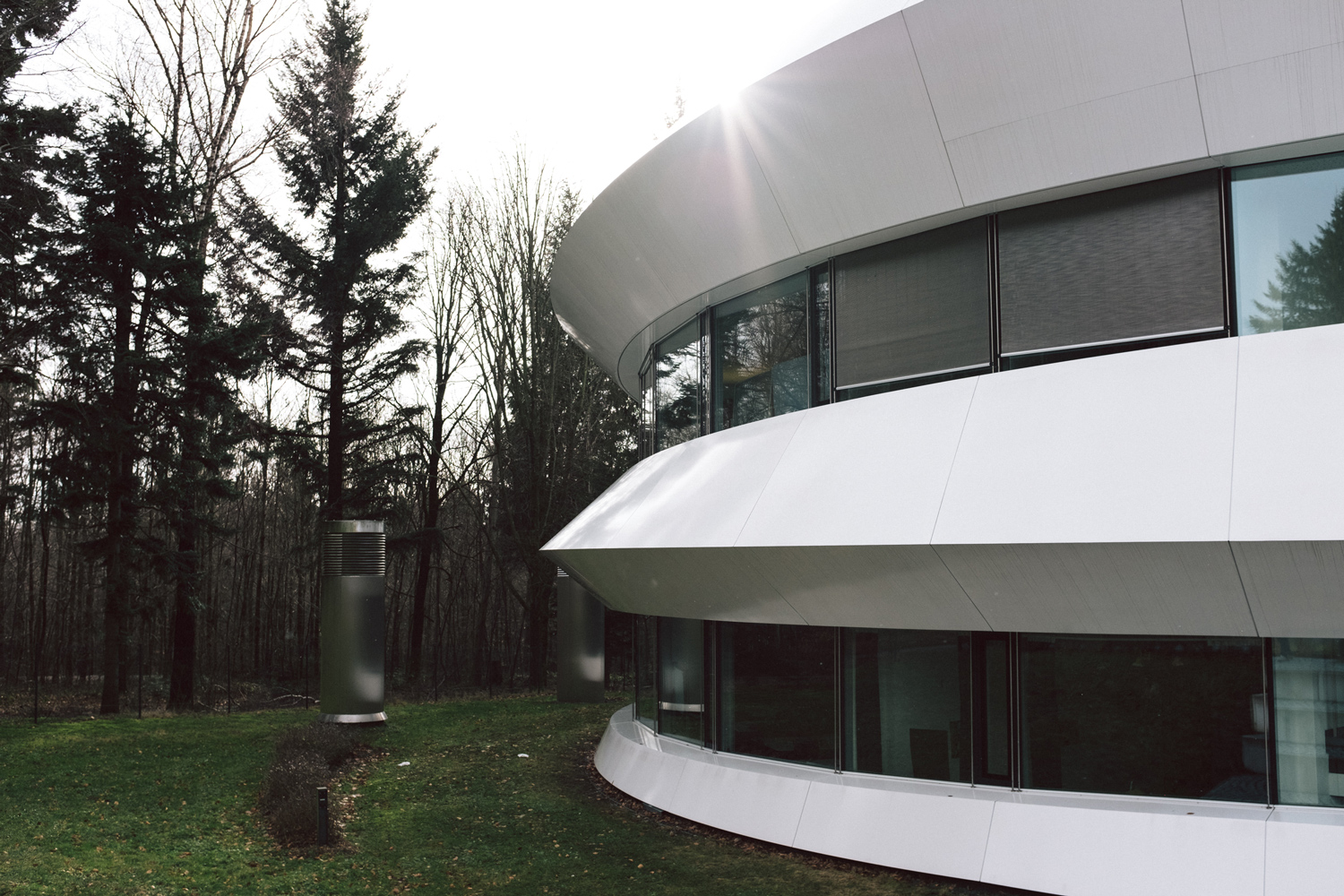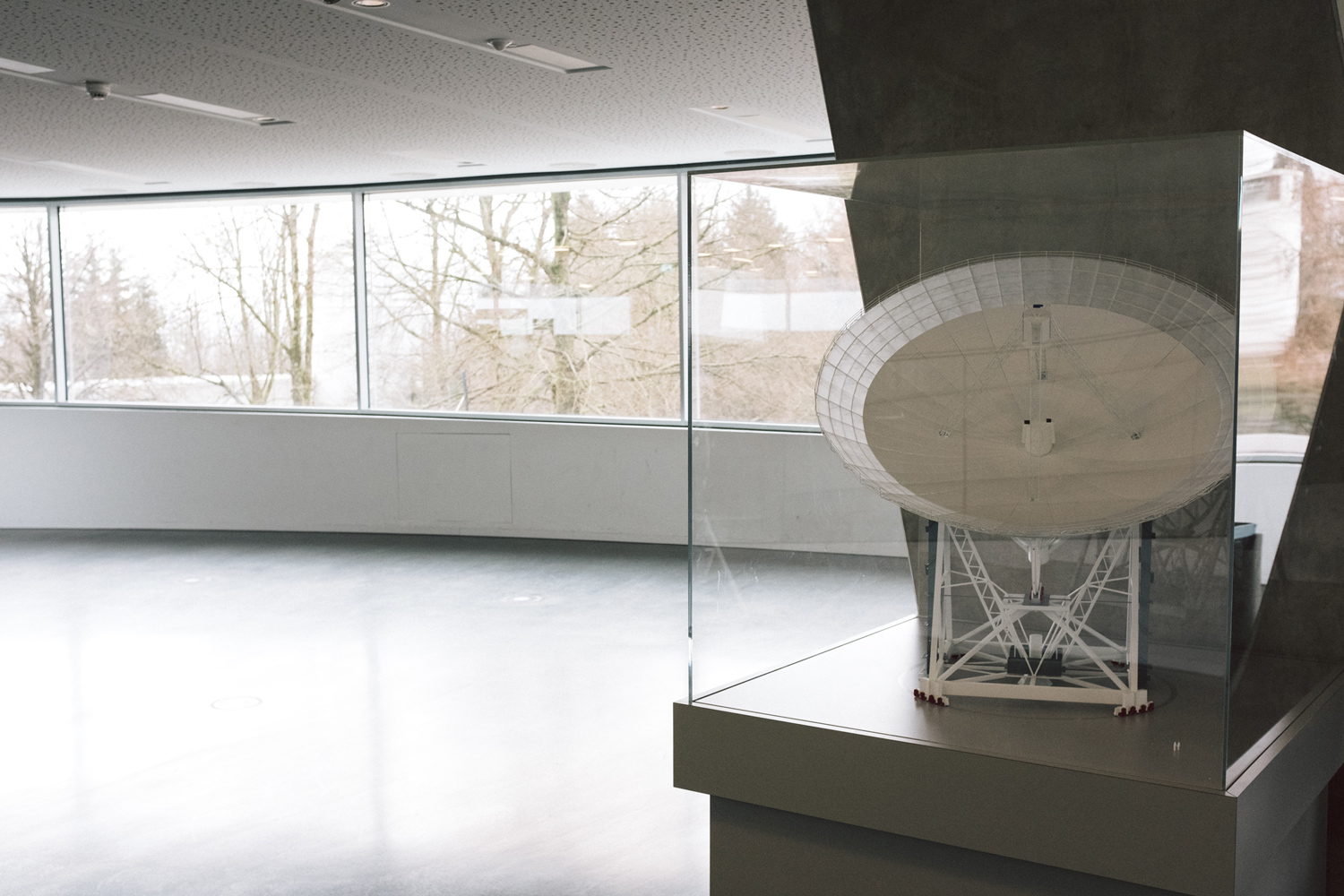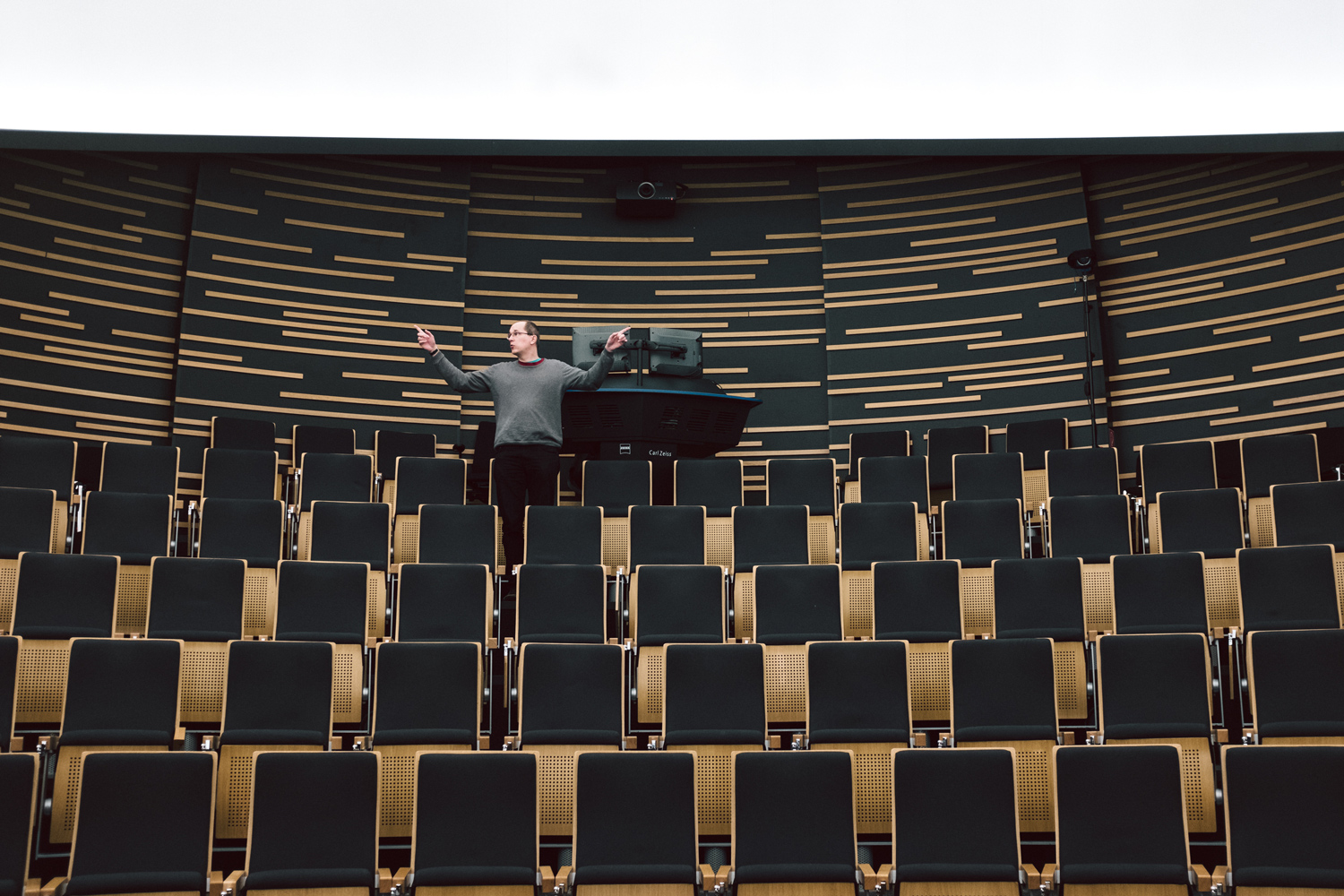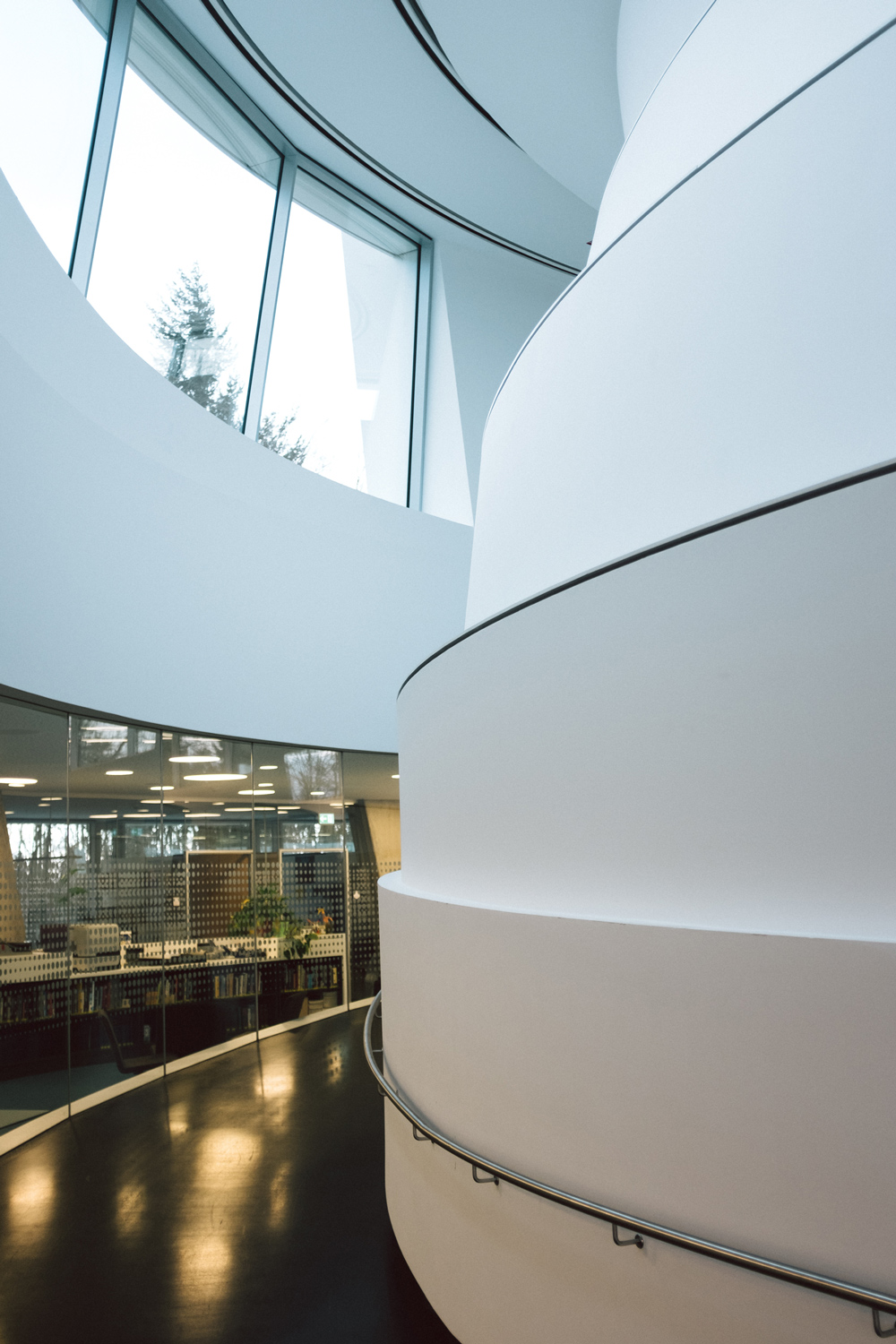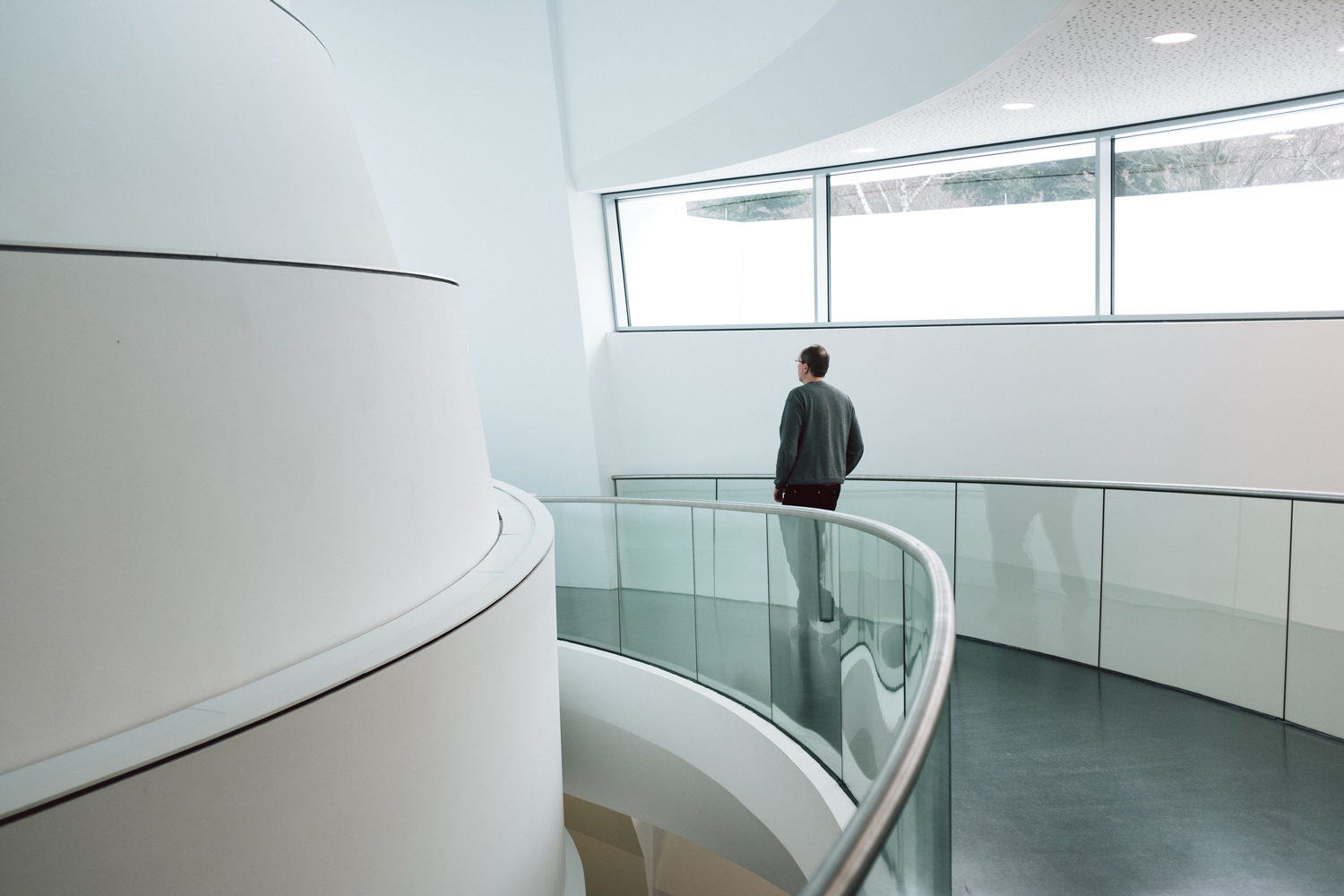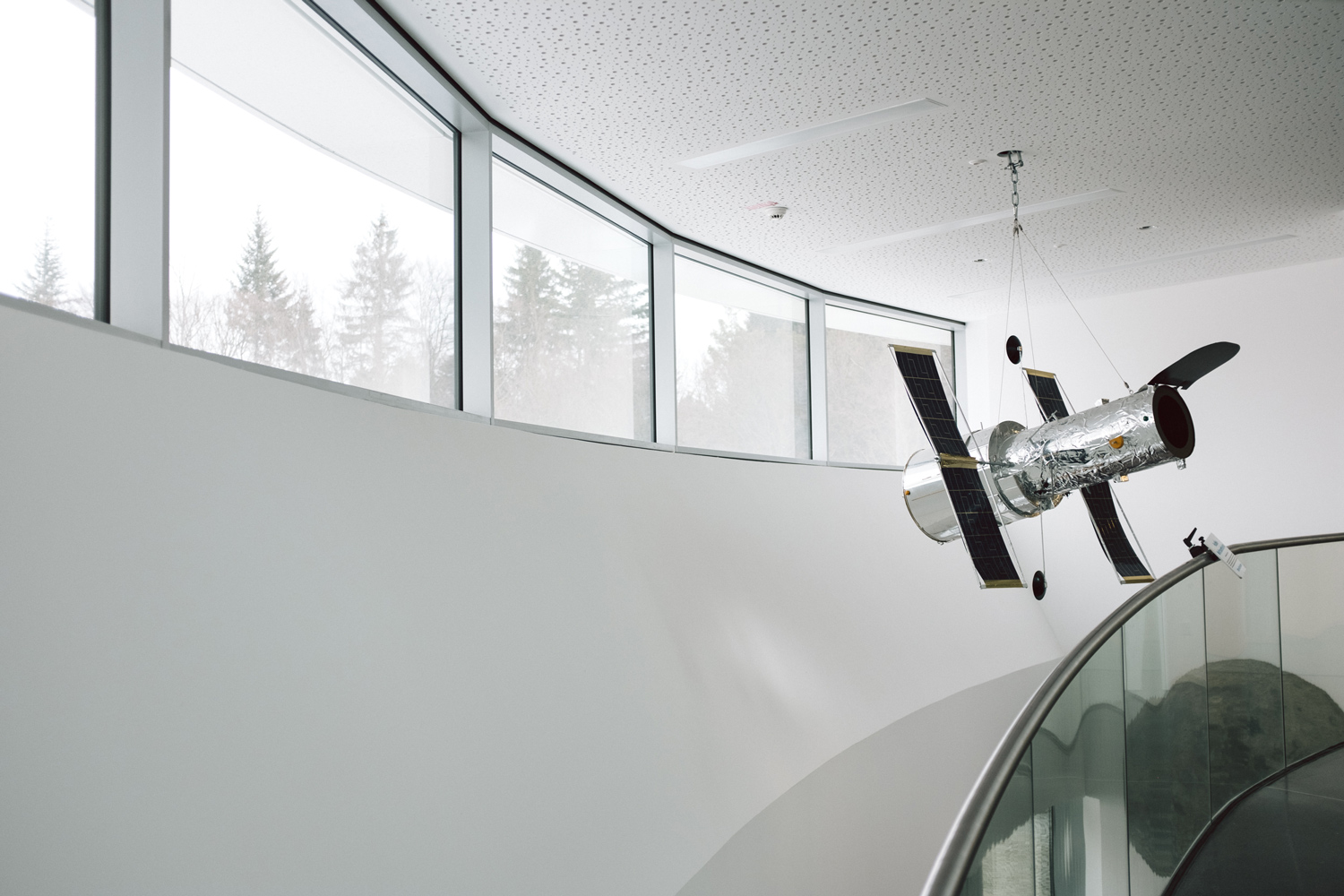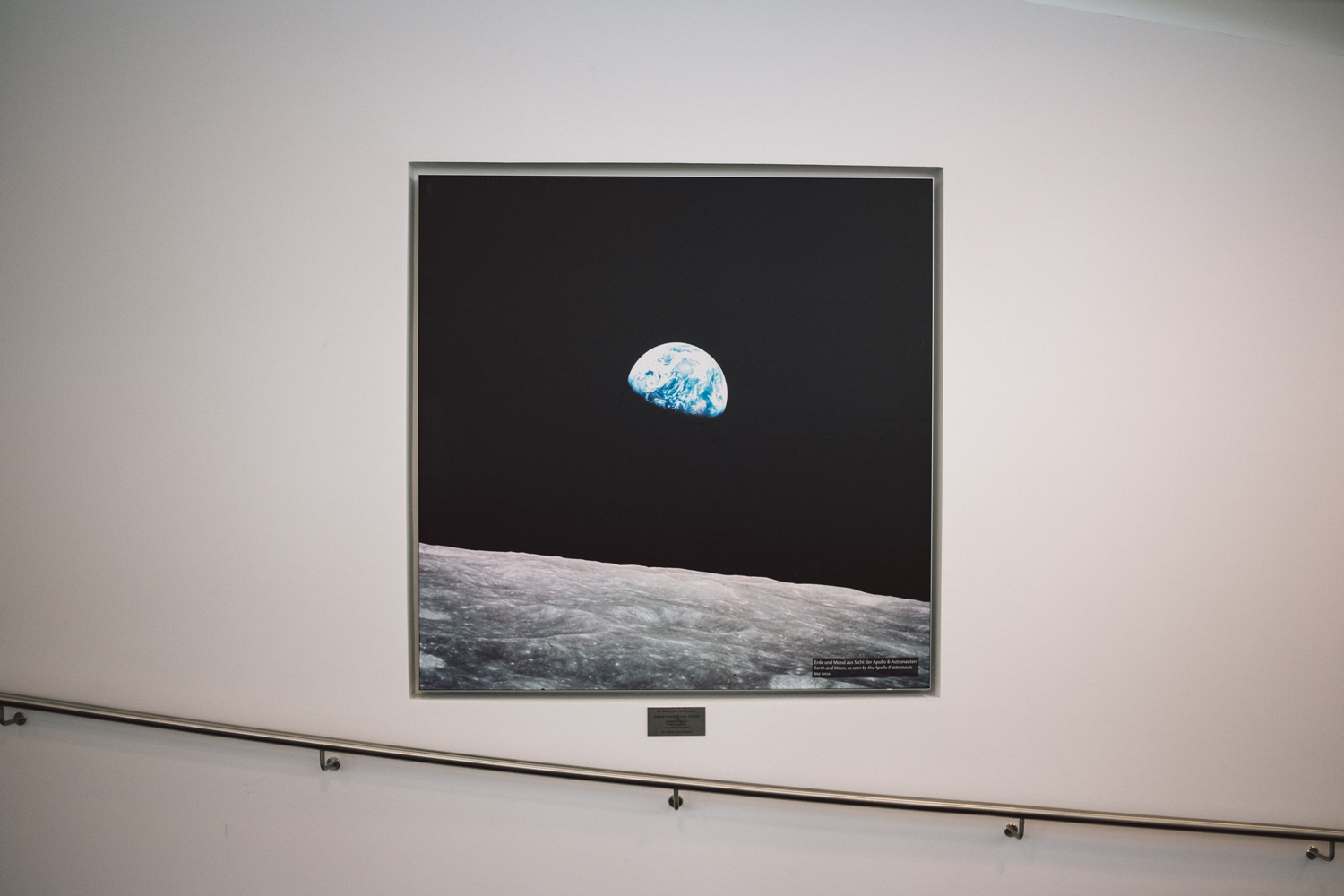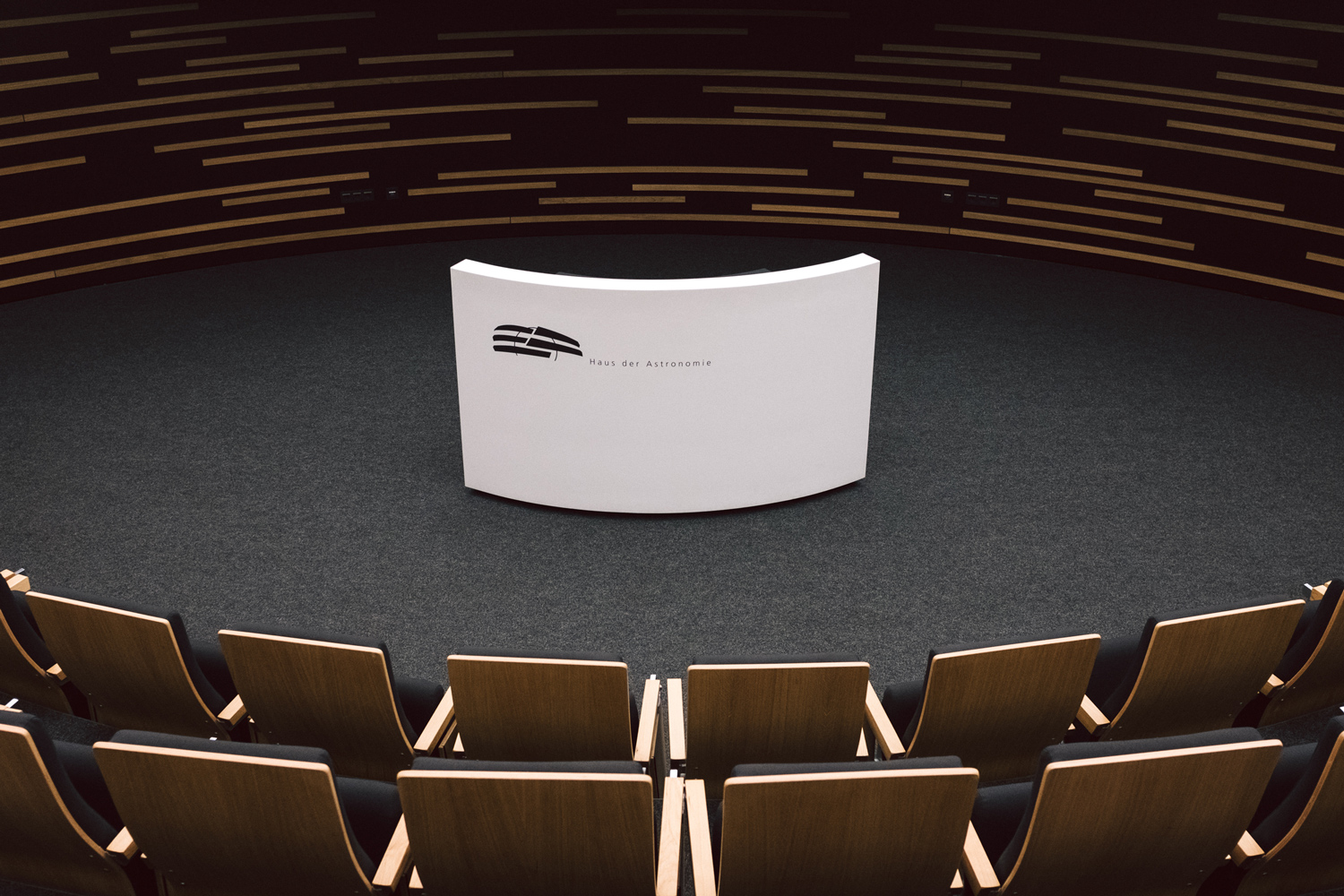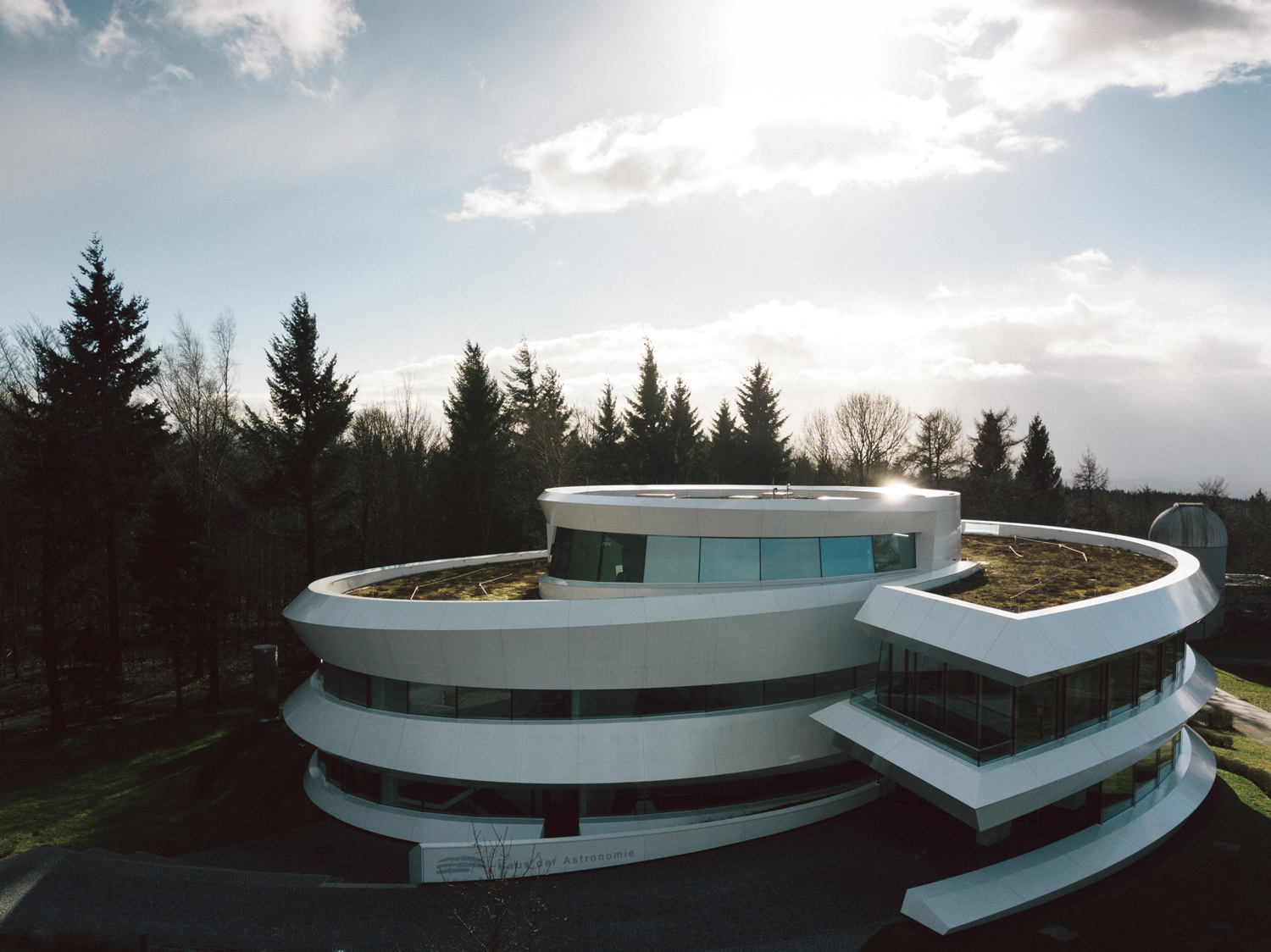The Whirlpool Galaxy M51 is located approximately 23 million light years away from Earth, in the midst of the stellar constellation Hunting Dogs. A miniature representation of the glowing spiral structure, not altogether true to scale, can be found on our home planet, too: above Heidelberg Castle.
A steep serpentine road through dense forest winds up all the way to the Königsstuhl mountain, Heidelberg’s highest point with an altitude of 567 metres. The moss-grown signposts seem to lead you to a dead end in the midst of green, but then at a forest clearing a futuristic-looking building emerges. No, this is not an offshoot of the Guggenheim Museum in New York, this is the Haus der Astronomie, the Center for Astronomy, the workplace of Dr. Pössel and his team.
“You will not find many right angles here at our centre. The architecture of the building follows the shape of Galaxy M51. Fortunately, the architects took some liberties with regard to the third dimension. Otherwise, the ceilings would be only 90 centimetres in height and we would have to crawl along the floors.” Dr. Pössel greets the visitors to the centre cheerfully. About 10,000 come here each year, amazed when entering the circular corridors inside the building. “The number of visitors might at first sound moderate, but it actually is a lot of people. Dealing with the general public is only one aspect of our work. Besides the wider public, there are mainly school classes and kindergarten groups who visit us, but also teachers looking for new ideas for their lessons.”
The fact that there is a lot to find out about the far reaches of the universe on Heidelberg’s highest peak is even well known far beyond the realms of the regional borders. Even from as far as Berlin and from the adjacent states school groups come to the Haus der Astronomie. During the three-hour stay, the kids admire the huge telescopes of the neighbouring astronomical observatory and venture to take a first glance into outer space. Senior pupils experiment under qualified supervision in workshop rooms belonging to the house. “We teach the next generation how to read a star chart and how to properly classify visible objects in the sky. Or we set out together on the path of the ESA Mars Express spacecraft, visiting our neighbouring planet. We explore the world of infrared astronomy or investigate colours and spectra of stars and nebulae.”

